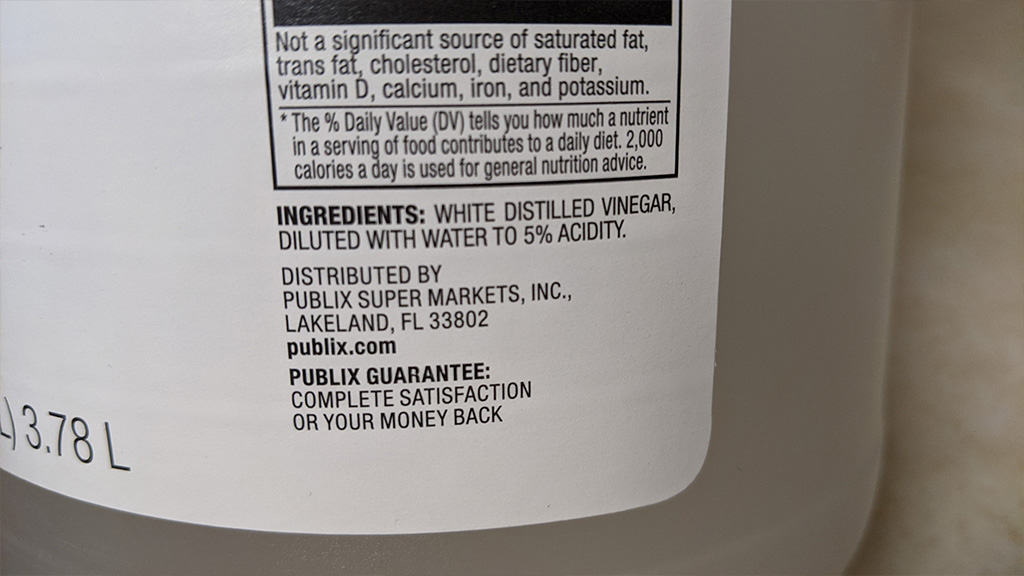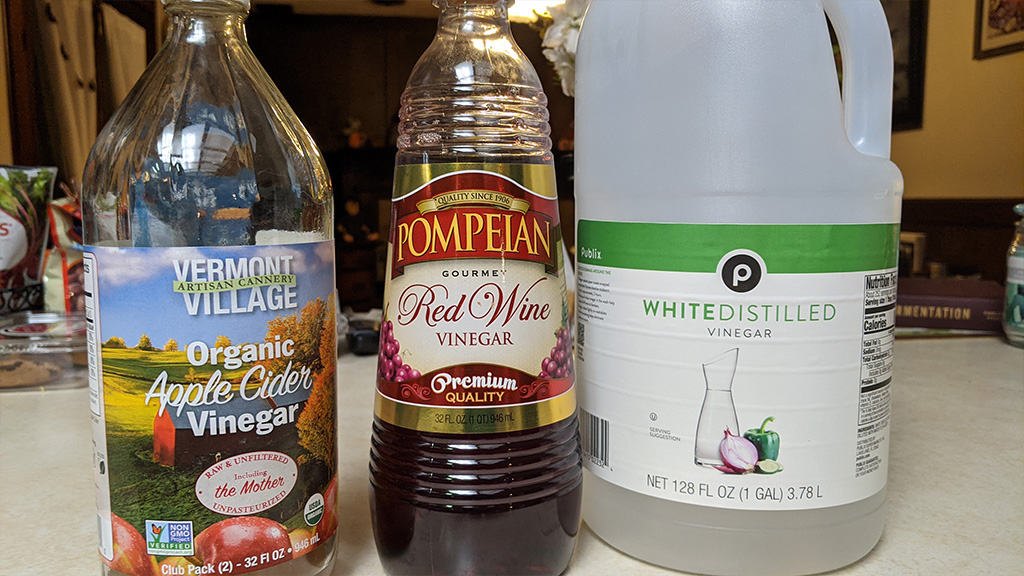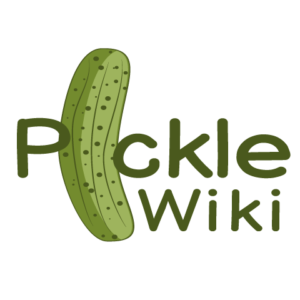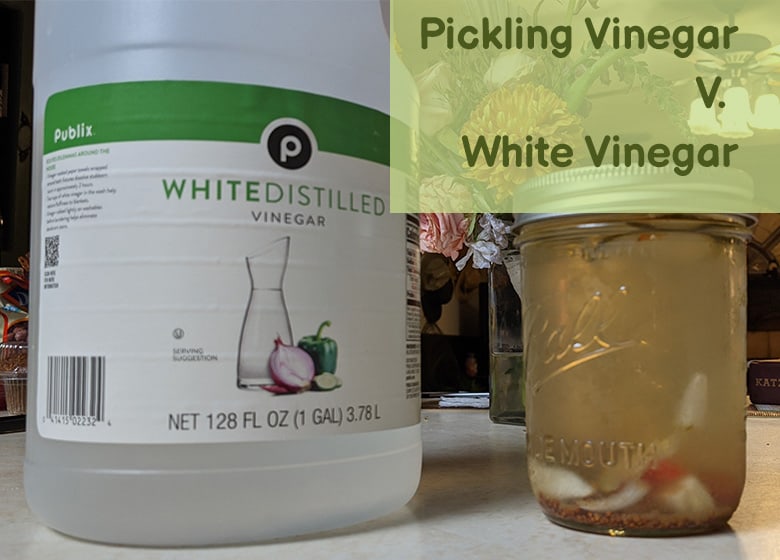Quick pickling uses vinegar. The novice pickler may be confused about all the types of vinegar on the market. Ready-to-use pickling vinegar is available, but many prefer the lower price of white vinegar and the flexibility it gives the pickler.
White vinegar and pickling vinegar are the same. Both types of vinegar usually have an acidity of around five percent. Sometimes you may find pickling vinegar that has added flavorings, but the base for all pickling vinegars is white vinegar.
This article discusses pickling vinegar and white vinegar, the best vinegar to use for pickling, some delicious pickle recipes, and how to get the best pickles every time!
What Is the Difference Between White Vinegar and Pickling Vinegar?
There is no difference between white vinegar and pickling vinegar. These two terms can be used interchangeably. However, pickling vinegar is a much broader term that encompasses any vinegar used for pickling, whereas distilled white vinegar only refers to one type of vinegar.
Therefore, all white vinegar can be pickling vinegar, but not all pickling vinegar is white vinegar.

There are a few things you want to consider when choosing a vinegar for pickling:
- Choose a vinegar that is 5% acidity or higher.
- Choose a vinegar that has not been diluted, if possible.
- Avoid pickling with only vinegar; make sure to add salt and sugar, or water as desired.
The following are a few kinds of vinegar to avoid when pickling fruits and veggies:
- Balsamic vinegar – This is aged white wine vinegar with caramel flavor added; it is not good for pickling due to its heavier viscosity.
- Salad vinegar – Salad vinegar is generally not acidic enough.
- Any vinegar not labeled with an acidity percentage or under 5% acidity – Those with lower acidities will not preserve the product you are trying to pickle. Bacteria and mold can grow more easily at lower acidities.
(Source: Pickling)
The Best Types of Vinegar for Pickling

There is much debate around which vinegar is best for pickling. In general, it comes down to the flavor profiles you prefer. Most recipes call for white vinegar; this type of vinegar can be infused to create a flavorful pickle of your design. However, once they become more familiar with the pickling process, many people prefer apple cider vinegar because of its balanced flavor profile.
The following chart compares common kinds of vinegar used in the pickling process:
| Vinegar | Pros | Cons |
| Distilled white vinegar – made from grain alcohol | Preserves color. Can easily be infused with spices and herbs. Very inexpensive | Not much flavor |
| Apple cider vinegar – made from fermented apple cider | Subtle apple flavor. Balanced acidity and sweetness. Same acidity as white vinegar, so it is easy to swap in recipes. | Will not preserve the color of pickled vegetables or fruits |
| Rice wine vinegar – made from rice wine | Low acidity. Can be used to cut harsher kinds of vinegar. Subtle sweetness | Can’t substitute in recipes because acidity is too low. Not much flavor |
| Other wine vinegar – made from red wine, white wine, champagne, and sherry | High acidity. Subtle flavors. Great paired with other kinds of vinegar | More expensive than distilled white vinegar |
The Science Behind Pickling with Vinegar
Vinegar has been used to preserve foods for thousands of years. In the “American Pickle” episode of Good Eats, Alton Brown discusses the science behind pickling and gives some great tips on the pickling process. His video is an informative and wacky approach to pickling!
The following are some major points on pickling from the episode:
- Pickling is a staple in many different cultures, from kimchi to chutneys.
- Any food preserved by acid is considered “pickled.”
- Infusion pickling is the fastest, most common pickling process.
- Acetic acid (common household name: vinegar) is the base of most pickle recipes.
- Changing the amount of the spices and combinations of vinegar can drastically alter the flavor of your pickles.
The best pickling vinegar is a combination of the following four ingredients:
- Vinegar
- Salt
- Water
- Sugar
These ingredients are the basis for most pickling recipes, as you will see below. If you want more flavor, you can add herbs and spices. The endless number of combinations of these four ingredients plus any number of herbs and spices makes pickling very customizable.
A Few Quick Pickling Recipes to Get You Started
Quick pickling, or infusion pickling, is the fastest way to get pickles. You can also try fermented pickles; however, those recipes do not rely on the acid from vinegar to do the pickling. Below are two starter recipes for traditional pickles and pickled peppers. This gives you a look at different pickling approaches and can get your mind turning if you want to be ambitious and create your own pickling recipe.
Gather the following items before you begin the pickling process:
- Knife and cutting board – For chopping your fruits, vegetables, and herbs
- Large jar or jars – For storing your pickled fruits and vegetables
- Large stockpot – For boiling your vinegar mixture to create the infusion
These two recipes focus on infusion pickling, which is the easiest and fastest way to flavor your pickles!
A Recipe for Traditional Quick Pickles Adapted From Jenn Segal
This is a quick and easy recipe that makes pickles in 24 hours! Remember that once you are more familiar with the pickling process, you can modify the spices and herbs to get a new flavor combination. This is especially fun when you pair your pickles with different dishes.
Gather the following ingredients before getting started:
- Cucumbers – Pick a variety that does not have a waxy coating; English cucumbers or pickling cucumbers
- White sugar
- White vinegar
- Water
- Garlic cloves, smashed
- Coriander seeds
- Mustard seeds
- Red pepper flakes
- Fresh dill
- Pickling salt – or any salt without iodine
Follow these ten steps to pickle your selection of peppers:
- Bring vinegar, salt, and sugar to a boil.
- Once salt and sugar are dissolved, remove from heat and add cold water.
- Refrigerate this mix until you are ready to use it.
- Cut cucumbers to the desired thickness and size. Chop dill.
- Place cucumbers, coriander seed, mustard seed, smashed garlic, red pepper flakes, and dill into the jar(s).
- Pour vinegar mixture over jarred cucumbers and store them in the fridge overnight.
- After 24 hours, your pickles are ready to serve. They will keep for about a month.
A Recipe for Pickled Peppers Adapted From University of Minnesota
Gather the following ingredients before getting started:
- Peppers – hot, mild, or sweet; whichever you desire
- White sugar
- Vinegar of 5% acidity
- Water
- Garlic cloves, smashed
- Pickling salt – avoid salt with iodine as it may create a cloudy appearance to your pickling liquid
Follow these six steps to pickle your selection of peppers:
- Wash peppers and chop to the desired size. Remove seeds and stems as needed. Place in a jar and set aside.
- Boil 1 cup of vinegar, 1 cup of water, and 3 and a half cups of sugar. Scale up as needed for larger batches.
- Once dissolved, add in garlic and salt. Stir to combine.
- Slowly pour the hot liquid over peppers until your jar is almost full. Let sit and add more vinegar mixture as peppers absorb liquid.
- Let cool and put in the fridge for one week.
- After one week, your quick pickled peppers are ready to eat. Eat within 2 to 3 months. Throw away if you notice any bacteria or mold growth.
In Conclusion
White vinegar and pickling vinegar are considered the same among the pickling crowd. However, it is important to know that when someone says pickling vinegar, they can be referring to any number or combination of vinegar.
Pickling vinegar is the most important component of preserving your fruits and vegetables. For this reason, it is crucial to pick a vinegar that has high acidity, at least 5%. Try using a combination of vinegar to create a more dynamic flavor profile. Happy pickling!

